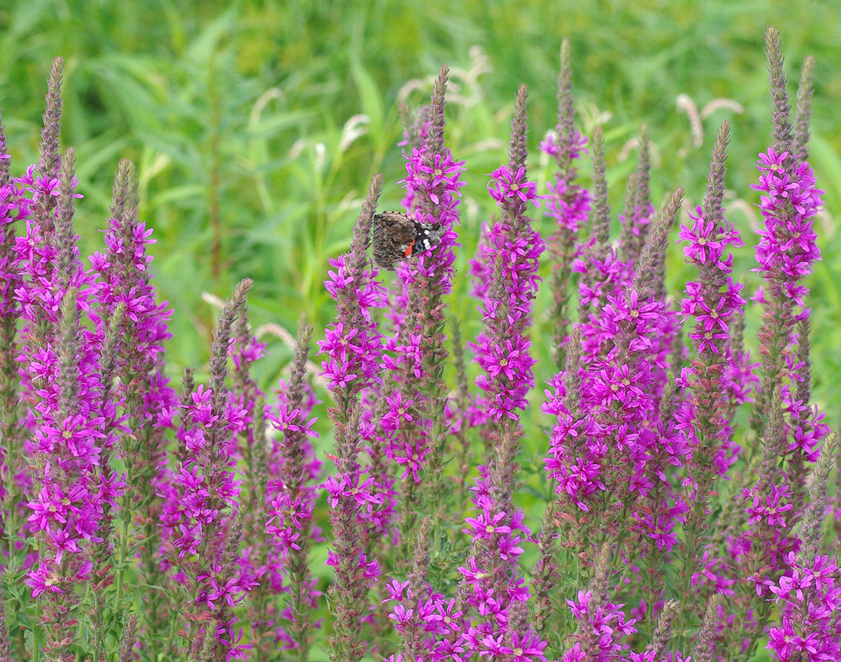
Black-margined Loosestrife Beetle
Howdy, BugFans,
Purple loosestrife is a beautiful plant, with great wands of magenta flowers waving in the breeze. Some say that, like a long list of other invasives, it entered the country in the ballast of ocean-going ships; others say that it was imported deliberately because it’s a medicinal plant as well as a great honeybee plant. The BugLady knew a beekeeper who seeded purple loosestrife from the back of his snowmobile one winter, before he knew better (repent at leisure). At any rate, it’s been here for 150 years or so, but it really started getting our attention in the 1970’s. On its home turf, it exists in proportion to other wetland plants; here, it crowds out native vegetation, its dense stands discourage nesting waterfowl, and it’s not used by wildlife as a food plant (insects sure love the flowers, though). There are native loosestrifes, but they’re not invasive.
All those spectacular flowers produce masses of seeds (a single plant’s output can be in the millions of seeds, annually). In gardens and upland situations, they fall to the ground and they grow or they don’t and that’s fine – the seeds stay pretty close to the parent plant. In wetlands, the seeds fall into the water and float away to colonize other corners of the marsh or pond edge or ditch. At the start of the battle against the purple loosestrife invasion in the 1980’s, Montezuma National Wildlife Refuge, at the north end of Cayuga Lake in NY, an area whose massive cattail marshes historically supported a thriving chair caning industry, had become wall-to-wall loosestrife.
It’s hard to get people psyched up about whacking beautiful plants. It frustrated the BugLady’s husband that as some people were working to get purple loosestrife banned, nurseries continued to sell it (he also worked hard on our county fair officials to ban its use in their flower arranging competition). Somewhere there exists a photo of our oldest at age 5, decked out in her Purple Loosestrife Task Force tee-shirt, dwarfed by the bundle of loosestrife that she’s holding. You get the picture. In some states, including Wisconsin, it’s now illegal to buy, sell, or plant it, but seeds are available online.
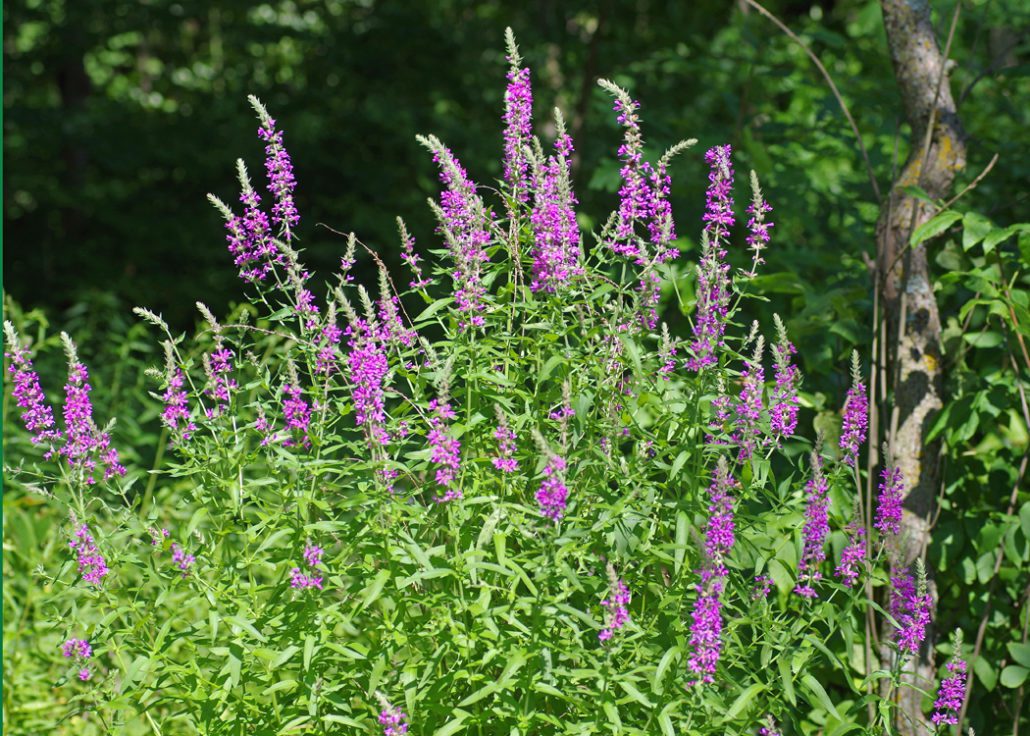
This is a story of (very carefully vetted) biological control.
When purple loosestrife began taking over American wetlands, scientists visited the Old Country to identify the grazers that the plant had left behind, and they found three species of weevils and two leaf beetles (family Chrysomelidae), Galerucella calmariensis and G. pusilla – the “Cella” beetles. The BugLady thinks that she photographed the Black-margined Loosestrife Beetle (Galerucella calmariensis) (BMLB) (some are “bandier” than others https://bugguide.net/node/view/399423).
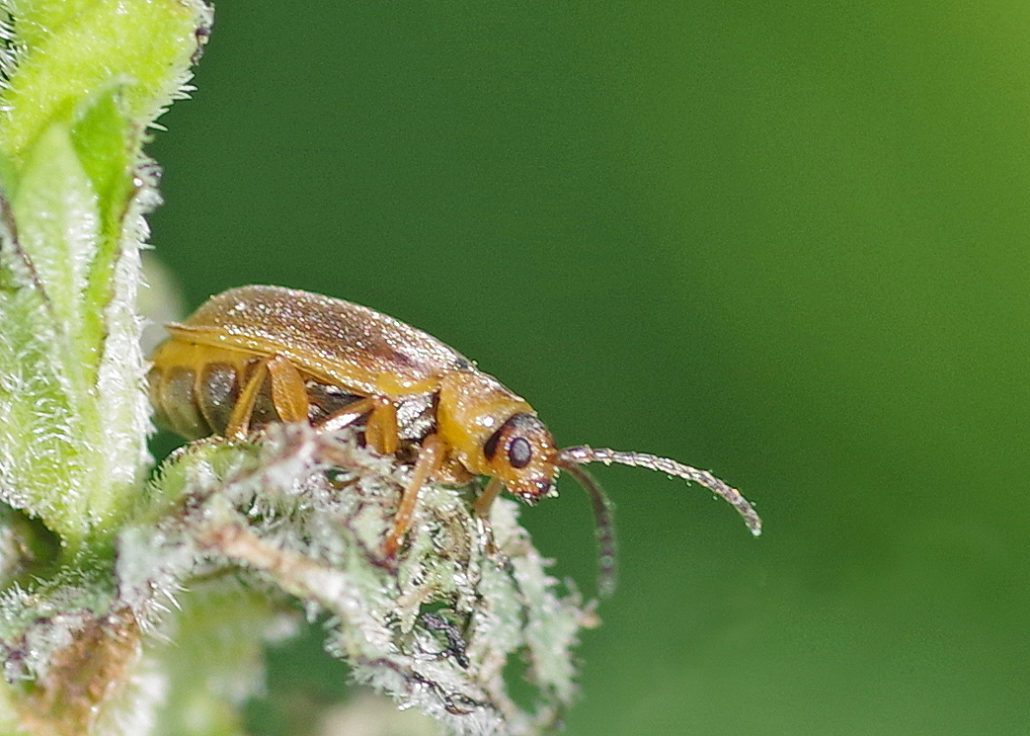
The BMLB’s native range is the Palearctic realm – Europe, most of Asia, and North Africa. It was introduced to this side of the Pond in 1992, after an impressive testing regime that involved inviting the beetle to sample some 50 species of North American plants to see if it would stray to another food plant. The tests were done in Europe instead of risking an escape here. In the tests, the Cella beetles vastly preferred purple loosestrife (they were mildly interested in our native Winged loosestrife (Lythrum alatum) in the lab, but preferred purple loosestrife in the field). Since then, the beetles have been introduced in southeastern Canada and 27 Northeastern, Northwestern, and Upper Midwestern states, and they’re doing a fine job, indeed. The two Cella beetles and two of the European weevils have been in play in Wisconsin since 1994.
Both the larvae and the adult BMLBs feed on purple loosestrife – the larvae on buds, shoots, and leaves (where they skeletonize the lower surface) (at a high density, the larvae alone can defoliate a plant), and the adults on the leaves, where their feeding causes a distinct “shot hole” defoliation. Their one-two punch diminishes seed production and impairs photosynthesis, so that the plant stores less starch in its roots, killing or making them less vigorous. As loosestrife plants decline, native plants can move back in.
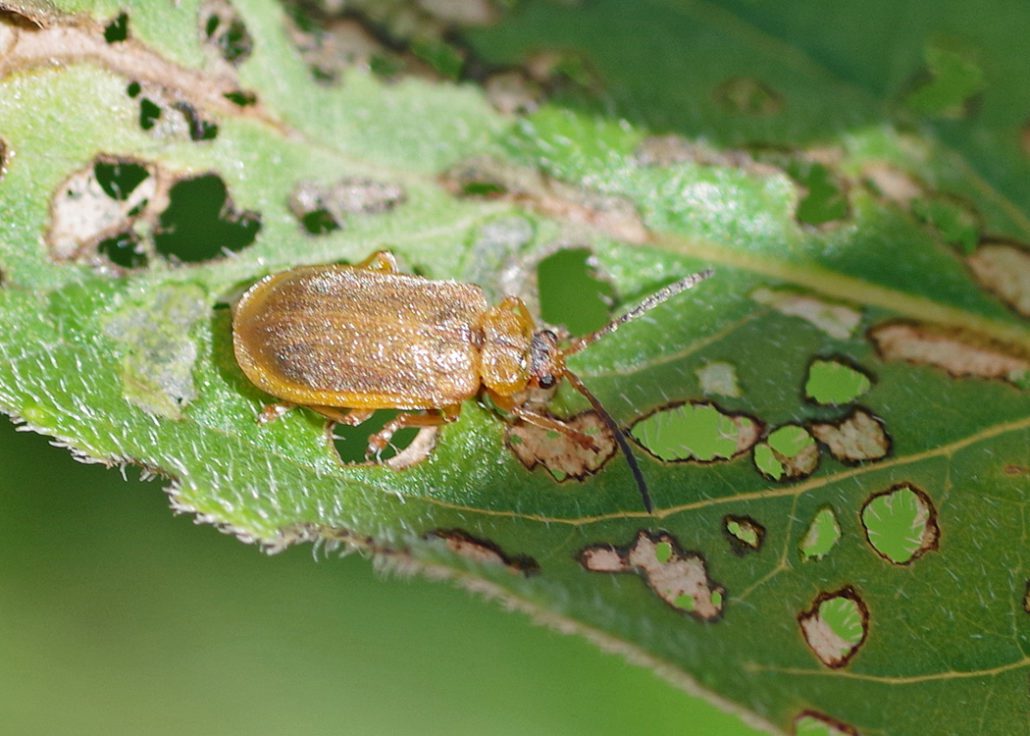
The biographies of the two species of Cella beetles are very similar, except for a small difference in timing – one species leads off, and the other bats cleanup. According to bugguide.net, “N. calmariensis emerges about a week before N. pusilla, first eating the leaves, shoots, and buds; then the N. pusilla eats the new growth, weakening the loosestrife, and after a few years the plants die off.”
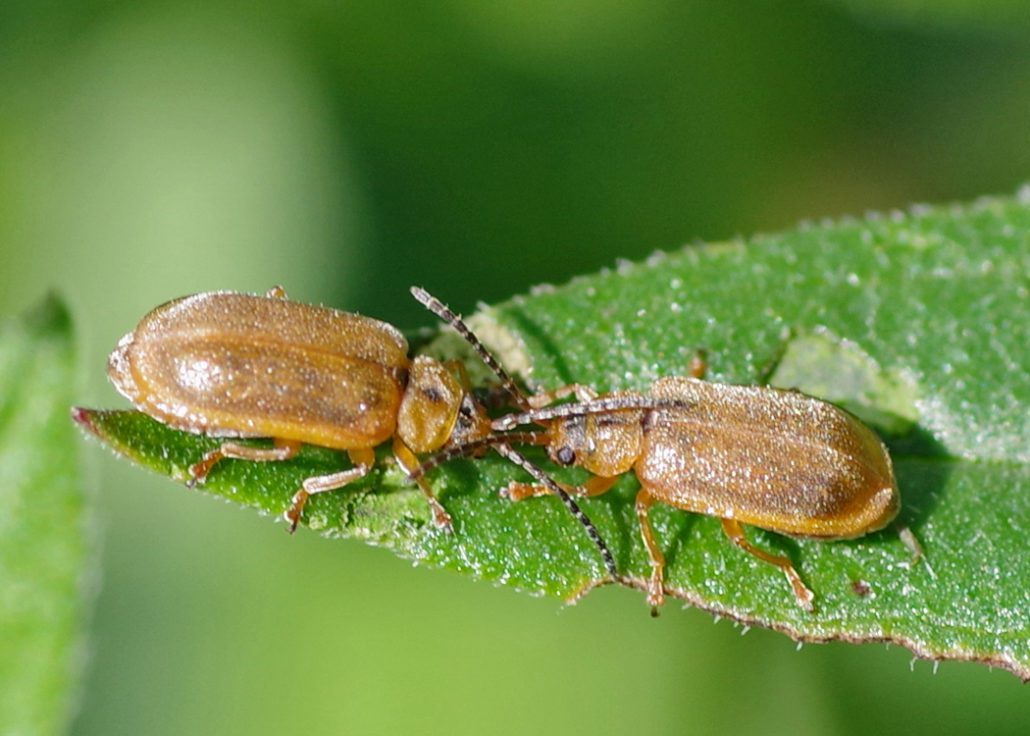
Adults eat, meet, and mate https://bugguide.net/node/view/2004790/bgimage on purple loosestrife, and females lay 300 to 400 eggs in batches on its stem and leaves. They are not shy about striking out and finding new patches of loosestrife plants to colonize. The larvae feed and then drop down and pupate in the soil (or in the plant stem, if the water is high), emerging as adults before the frosts to feed again. Adults overwinter in the leaf litter at the base of the plants, emerging as the loosestrife starts growing again.
Biological control of purple loosestrife isn’t quite as easy as tossing a bunch of Cella beetles out into a marsh and watching the loosestrife fade away. The beetles are very susceptible to pesticides; they’re not attracted to loosestrife that’s growing in the shade or in high water; and a couple of species of lady beetles, a ground beetle, and a stink bug consider BMLBs delicious, slowing them but not stopping their spread. According to the Cornell University (Go, Big Red!) College of Agriculture and Life Sciences’ Biological Control website, it’s estimated that once established, the work of the weevils and leaf beetles will reduce the loosestrife populations by about 90% over about 90% of its present range. But it’s a long game – it may take three to five years (one source says seven to ten) for the beetles to build up to levels where they can significantly impact purple loosestrife.

And the long, long game? According to Reinartz’s Law of Biomass Availability, eventually native species will recognize that this vast mess of plants is edible (simply put – “If You Grow It, They Will Come”).
Check with the Wisconsin DNR for information about rearing Cella beetles for release https://dnr.wisconsin.gov/topic/Invasives/loosestrife.html.
Kate Redmond, The BugLady
Bug of the Week archives:
http://uwm.edu/field-station/category/bug-of-the-week/
